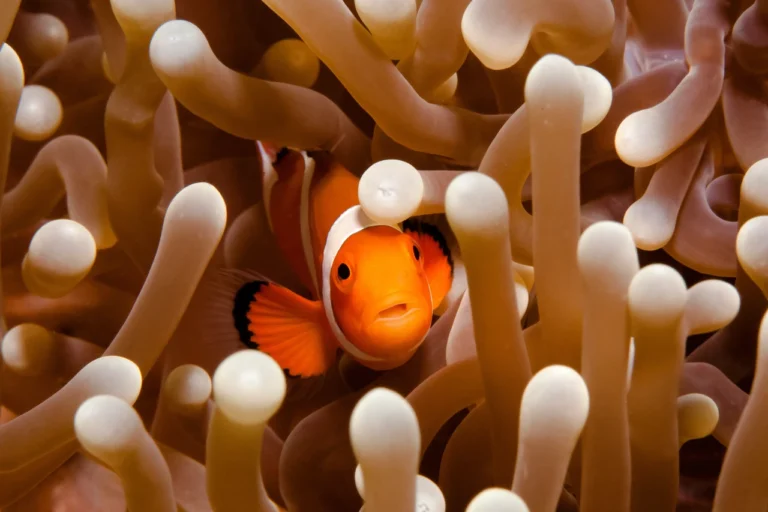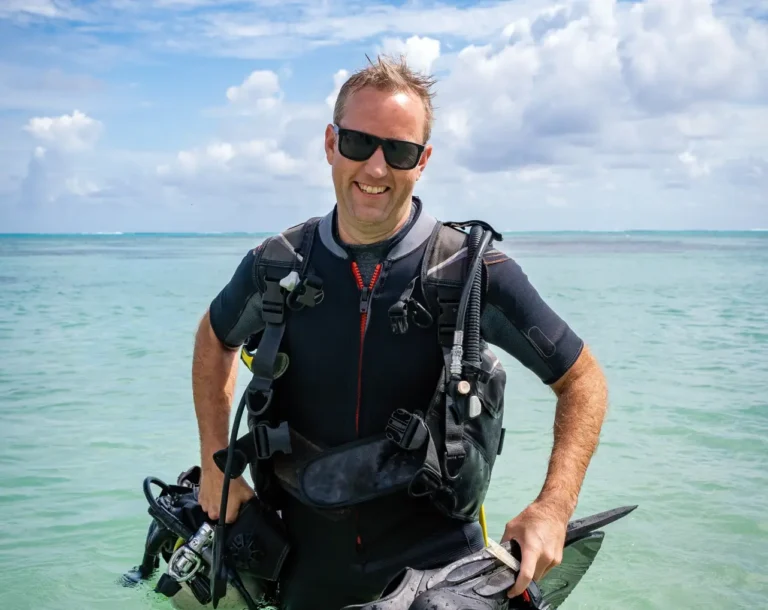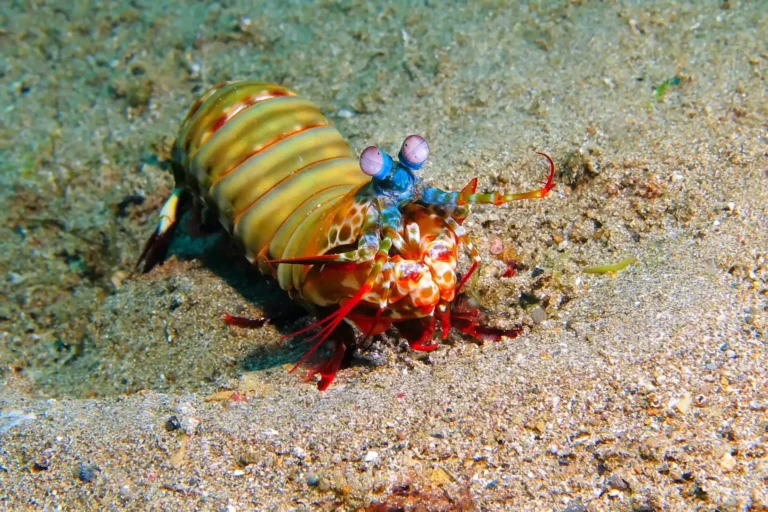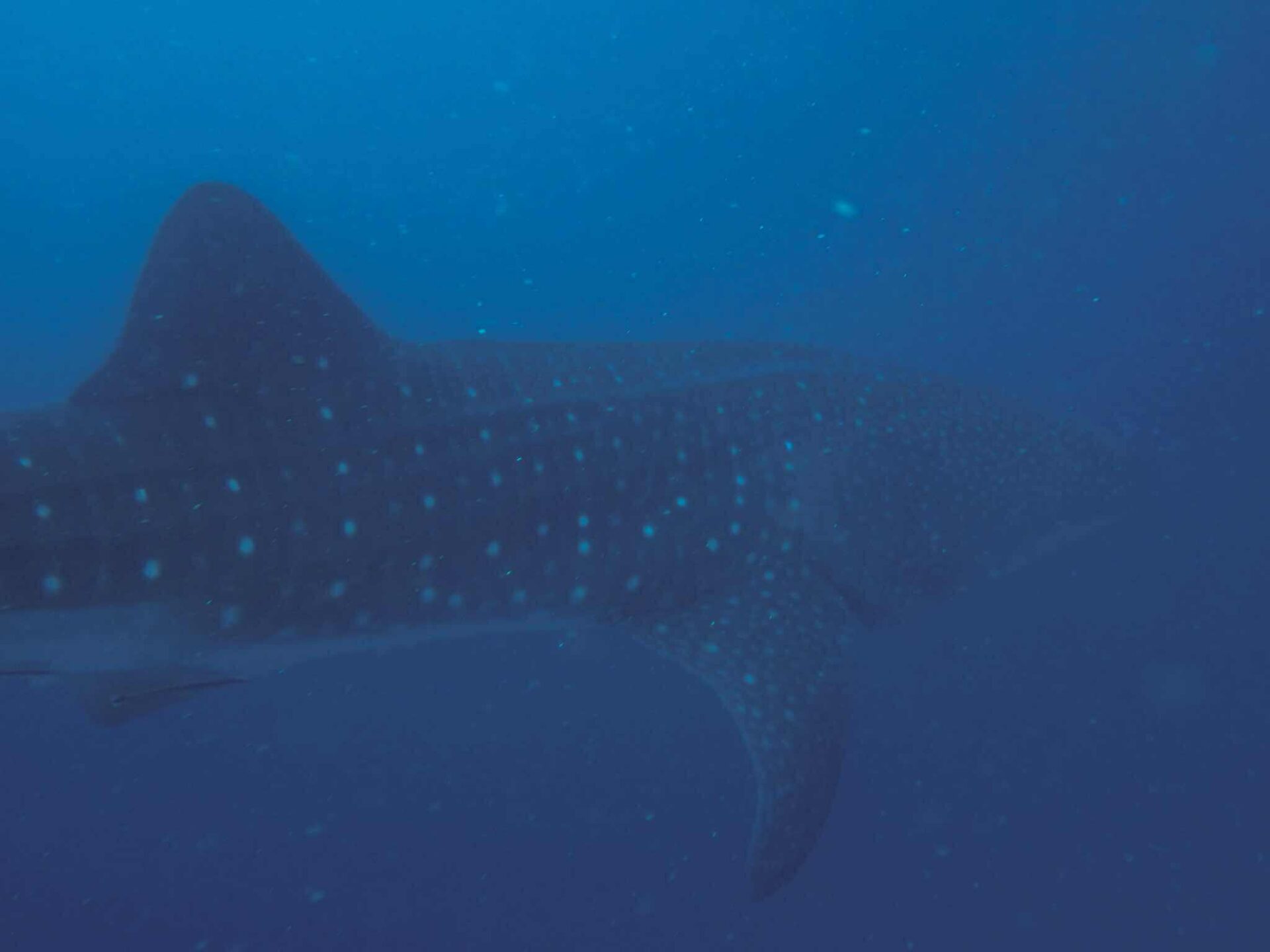There’s a certain magic to the underwater world of Bohol. As you descend into the warm, crystalline waters, a vibrant tapestry of coral gardens and teeming marine life unfolds before your eyes. While majestic whale sharks and graceful sea turtles often steal the spotlight, it’s the smaller, more charismatic residents that truly capture the hearts of many divers. Among these, the ever-charming clownfish, with its brilliant hues and playful demeanor, holds a special place. For us at Sierra Madre Divers, sharing the joy of encountering these iconic fish in their natural habitat is one of the purest pleasures of diving in the Philippines.
Instantly recognizable to many as “Nemo,” the clownfish is more than just a cartoon character. It’s a fascinating and vital part of Bohol’s delicate marine ecosystem. These small, brightly colored fish, belonging to the anemonefish subfamily, are a common and welcome sight on our dives, yet the thrill of spotting one peeking out from its anemone home never fades.
The Clownfish of Bohol: A Kaleidoscope of Colors
The waters surrounding Bohol are blessed with a rich biodiversity, and this extends to its clownfish population. While the classic orange and white-striped Ocellaris Clownfish (Amphiprion ocellaris), the species of the famed Nemo, is a frequent sighting, you’ll also encounter other stunning varieties. Keep a keen eye out for the Clark’s Anemonefish (Amphiprion clarkii), which boasts a striking black and yellow coloration with bold white stripes. Another beautiful resident is the Pink Skunk Clownfish (Amphiprion perideraion), distinguished by its delicate pinkish-orange body and a single, elegant white stripe running along its back.
Each species has its preferred type of sea anemone, the vibrant, flower-like animals with which they share a remarkable symbiotic relationship. This underwater partnership is a perfect example of nature’s ingenuity. The clownfish, protected by a layer of mucus, is immune to the anemone’s stinging tentacles, which provide a safe haven from predators. In return, the feisty clownfish earns its keep by cleaning the anemone of parasites, fending off butterflyfish that would nibble on its host, and even aiding in water circulation. Observing this intricate dance of codependence is a truly captivating experience for any diver.
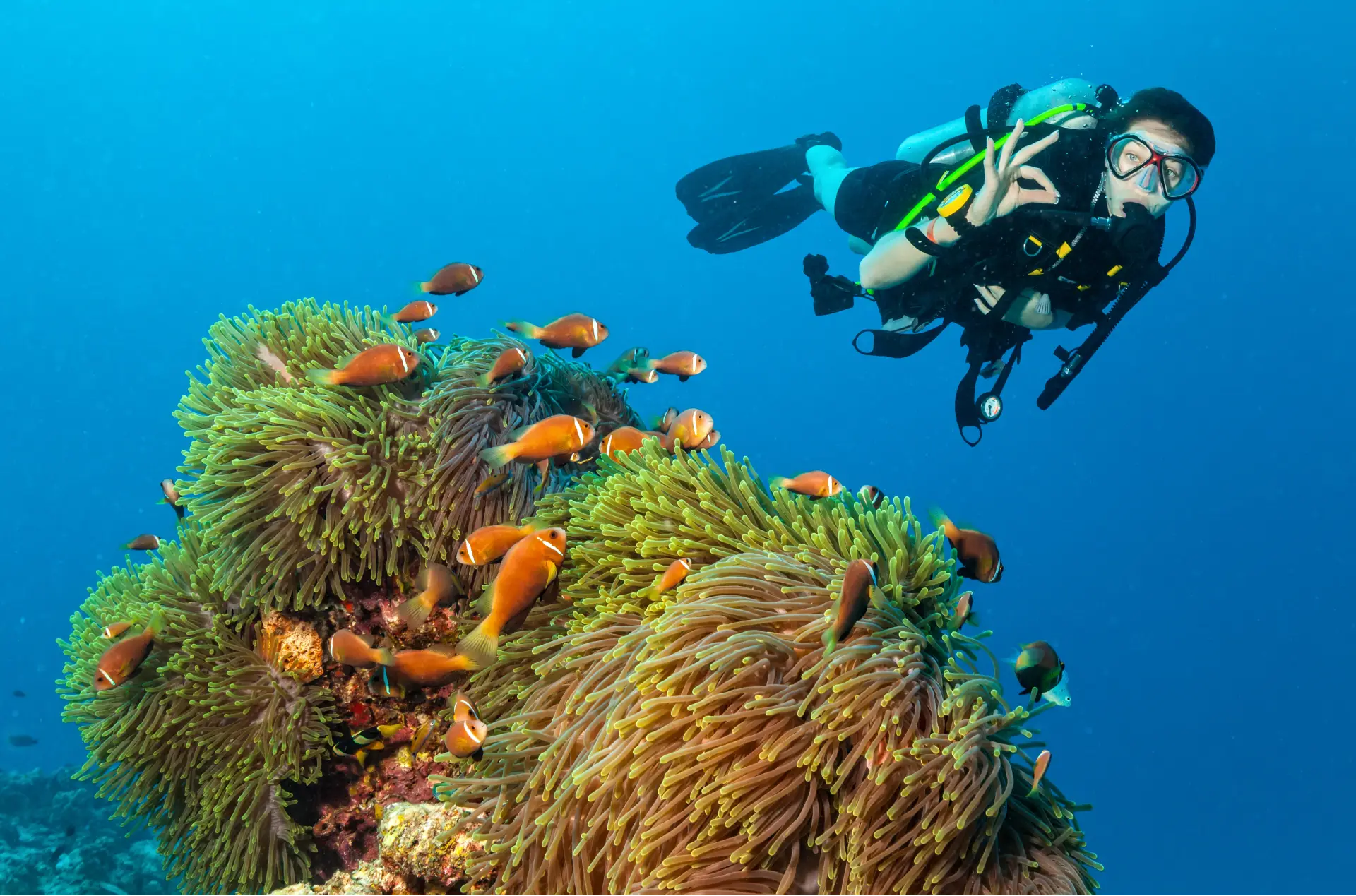
Where to Find Bohol’s Underwater Jewels
Bohol is renowned for its diverse array of world-class dive sites, many of which are just a short boat ride from our base on Alona Beach. For those eager to witness the enchanting world of clownfish, several locations offer almost guaranteed sightings.
Balicasag Island: A jewel in Bohol’s diving crown, Balicasag Island is a protected marine sanctuary, and it shows. The vibrant coral walls and slopes are teeming with life, and anemones with their resident clownfish are a common feature. At sites like the Black Forest and Rico’s Wall, you can spend mesmerizing moments watching families of clownfish dart in and out of their homes, their bright colors a stark and beautiful contrast against the deep blue.
Panglao Island: You don’t have to venture far to find these underwater treasures. The reefs around Panglao Island itself, including our own house reef, are dotted with anemones that are home to thriving clownfish communities. These accessible sites are perfect for both novice and experienced divers, offering a fantastic opportunity for underwater photography. The gentle slopes and excellent visibility make for a relaxed and rewarding dive.
Anda: For those seeking a more off-the-beaten-path adventure, the dive sites around Anda on the eastern side of Bohol offer pristine coral gardens and a tranquil diving experience. Here, you can find a variety of clownfish species amidst a backdrop of untouched reefs.
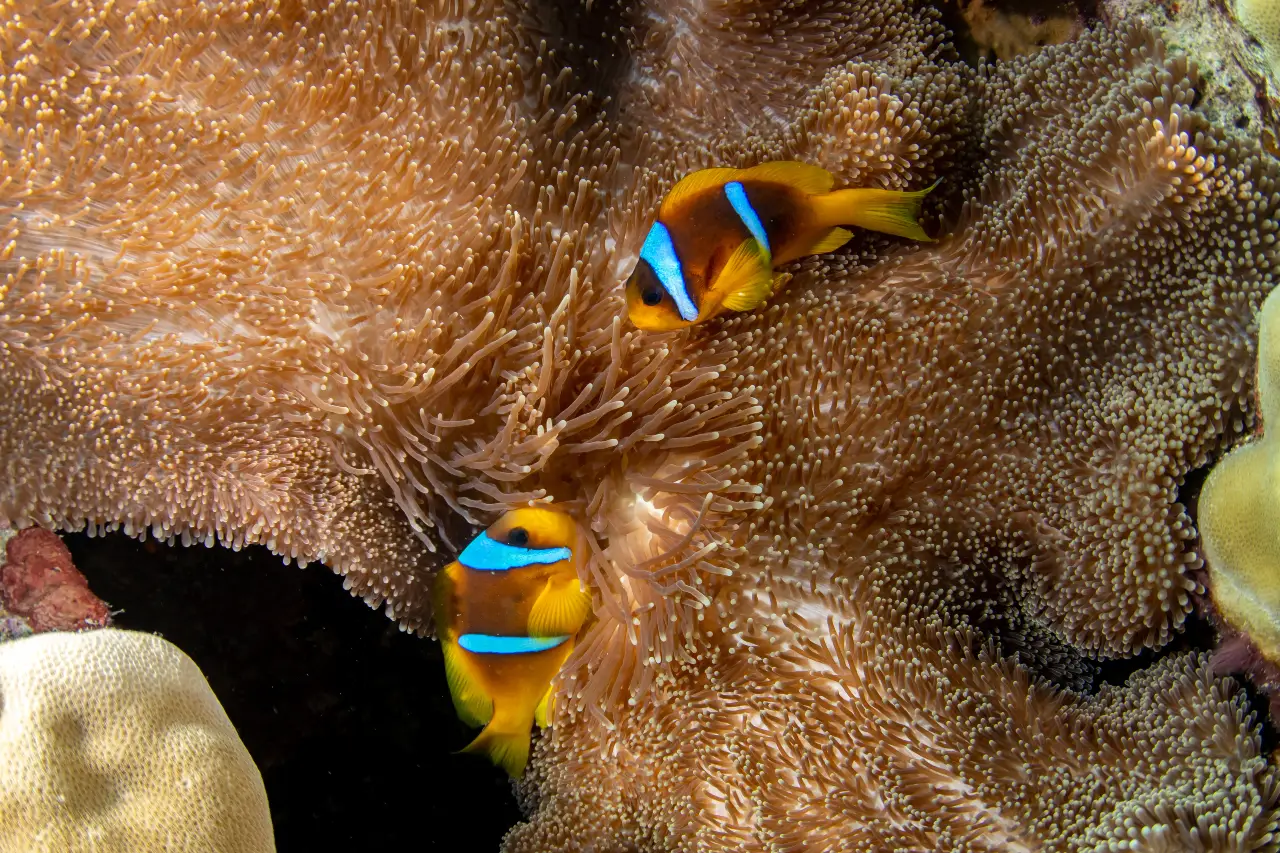
The Fascinating Behavior of Clownfish
Beyond their good looks, clownfish exhibit a range of fascinating behaviors that are a delight to observe. They are fiercely territorial, and it’s not uncommon to see a plucky little clownfish bravely charge at a much larger fish—or even your camera lens—that strays too close to its anemone.
Within their anemone homes, clownfish live in a strict social hierarchy. The largest and most dominant fish is the female, with a smaller, sexually active male as her mate. The other, smaller clownfish in the anemone are sexually immature males. In a remarkable twist of nature, if the female dies, the dominant male will change sex to become the new female, and the next largest male will take his place as the breeding male.
Their communication is another intriguing aspect. While we may not hear it, clownfish produce a series of pops and clicks to communicate with each other, especially when defending their territory. As a diver, taking the time to quietly observe a clownfish family can reveal these subtle and fascinating interactions.
A Commitment to Conservation: Protecting Our Underwater Friends
The vibrant clownfish populations and the stunning coral reefs they inhabit are a precious resource. At Sierra Madre Divers, we are deeply committed to their protection. As a PADI Dive Center, we adhere to and promote responsible diving practices that ensure our impact on the marine environment is minimal.
The health of the clownfish is intrinsically linked to the health of their host anemones and the surrounding coral reefs. Threats like climate change, which can lead to coral bleaching, and pollution can have a devastating impact on these delicate ecosystems. By choosing to dive with a responsible operator, you are playing a vital role in the conservation of Bohol’s underwater paradise. We encourage all our divers to practice excellent buoyancy control, avoid touching the coral and marine life, and to take only pictures and leave only bubbles.
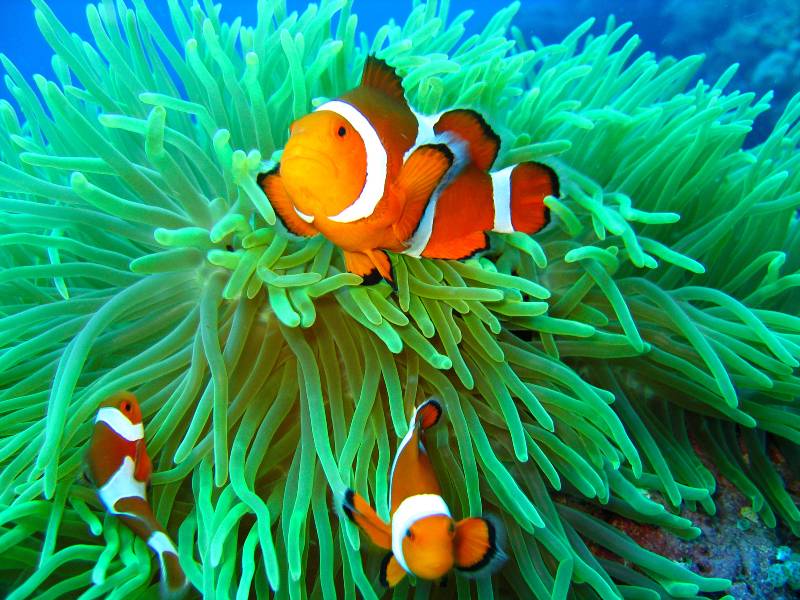
Fascinating Clownfish Facts
Beyond their stunning appearances, clownfish have a number of intriguing biological and behavioral traits:
- Sequential Hermaphroditism: All clownfish are born male. They live in a strict social hierarchy within their host anemone, led by a dominant female. If the female dies, the largest and most dominant male will change sex to become the new female.
- Vocal Communication: Clownfish communicate with each other using a series of pops and clicks. These sounds are often used to establish dominance and defend their territory.
- Immunity to Stings: Clownfish have a protective layer of mucus on their skin that makes them immune to the stings of their host anemone. The exact composition of this mucus is still being studied by scientists.
- Dedicated Parents: The male clownfish is a very dedicated father. After the female lays her eggs on a hard surface near the anemone, the male diligently guards them, fanning them with his fins to keep them clean and oxygenated until they hatch.
- Designer Clownfish: Due to their popularity in the aquarium trade, many “designer” clownfish with unique color patterns have been selectively bred in captivity.
Your Invitation to Dive with the Clowns
The allure of the clownfish is undeniable. Their vibrant beauty, fascinating behaviors, and the intricate world they inhabit offer a window into the magic of the ocean. A dive in Bohol is more than just an adventure; it’s an opportunity to connect with nature in its purest form.
Whether you are taking your first breaths underwater or are a seasoned diver with hundreds of dives under your belt, the clownfish of Bohol are waiting to enchant you. We at Sierra Madre Divers would be honored to guide you on this unforgettable journey. Our experienced local divemasters, who have an intimate knowledge of these waters, will lead you to the best spots to observe these captivating creatures. So, come and join us, and let’s go find Nemo together.

